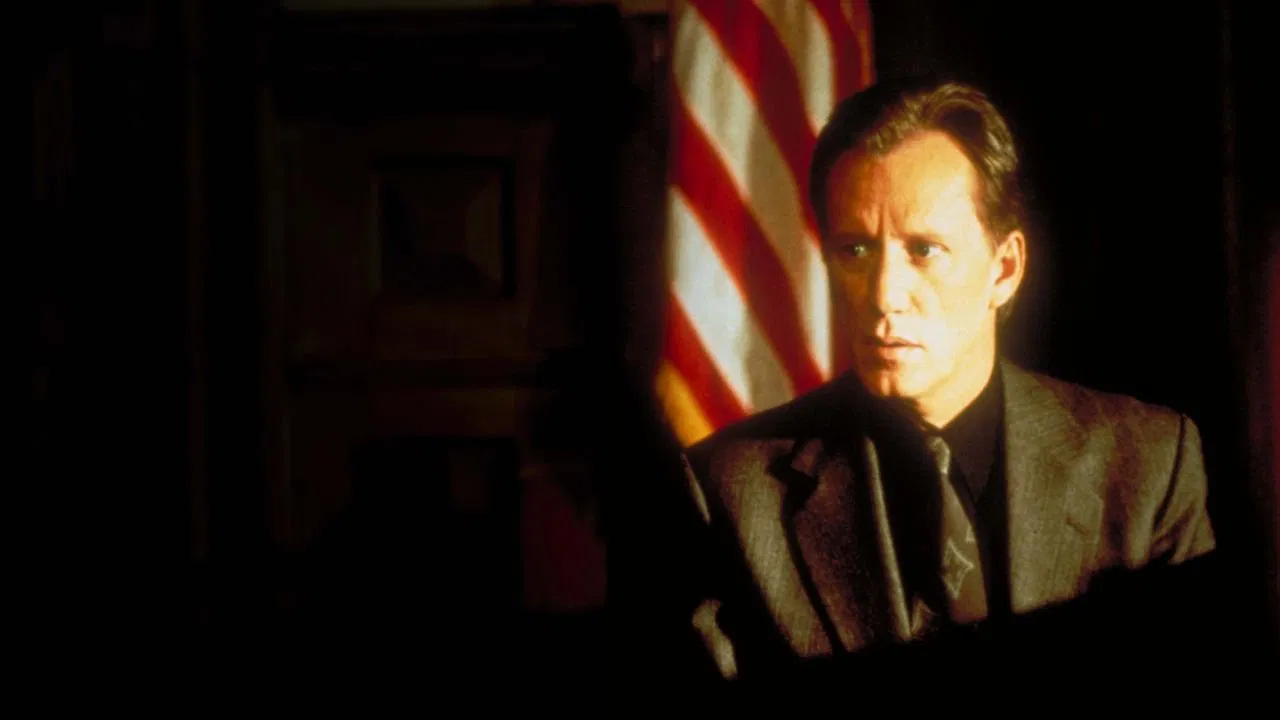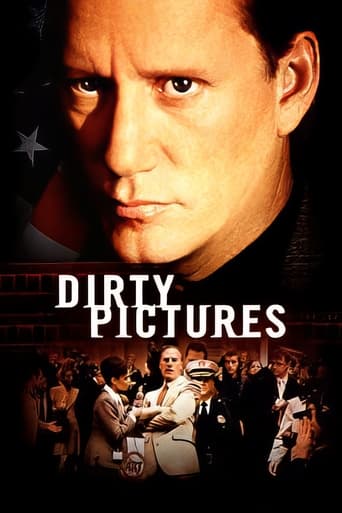


Just what I expected
... View MoreExcellent but underrated film
... View MoreI cannot think of one single thing that I would change about this film. The acting is incomparable, the directing deft, and the writing poignantly brilliant.
... View MoreThis is one of the few movies I've ever seen where the whole audience broke into spontaneous, loud applause a third of the way in.
... View MoreArt can cause a lot of trouble. No doubt about it. In 1913, a ballet debuted in Paris, "The Rite of Spring," full of strange rhythms and telling the story of the barbaric sacrifice of a young virgin. The audience included such luminaries as Picasso, Cocteau, Proust, Ravel and Debussy. Some folks liked it, many didn't. There were hisses, boos, and catcalls. Objects were thrown at the stage. Fights broke out. The police were called. And the composer, Stravinsky, and the choreographer, Nijinsky, had to escape out the back way.What that incident and the story shown in this movie have in common is that neither object of community scorn -- not the ballet and not the Mapplethorpe photographs -- were intended to promote social change, nor could they have, even if the artists had wanted them to. The Mapplethorpe exhibit at the Cincinatti gallery wasn't the equivalent of an hysterical call to arms by Commies or Nazis, and nothing like the shout of "fire" in a crowded theater.Yet everyone in the community was divided on the issue. Dennis Barrie, who runs the gallery and booked the exhibit, is played by James Woods, who is better at half-comic loonies than upstanding champions of freedom of speech. Seven of the photos are disturbing enough. Among the pretty flowers with their unfolding petals are the genitalia of human beings, and the abuse of those organs. Some are outright disgusting -- a man urinating in another's mouth. Man, though, does Woods get into trouble. His family gets threatening phone calls at night, his kid is insulted and beaten at school, his wife has to resign from the PTA, none of his neighbors will talk to him, and Woods himself is arrested, brought to trial on obscenity charges, and acquitted.I wasn't expecting much but actually the film isn't that bad. Both positions -- for and against Woods and his exhibit -- are shown, with their expectable fringe elements waving placards and dancing wildly up and down as they shout curses and encouragement. And there are some talking heads -- Barney Frank, William F. Buckley, and Salman Rushdie among them -- who are able to calmly articulate the reasoning behind the emotions displayed by the crowds.Some clichés must be unavoidable in these kinds of films, and they do show up here. The anonymous jury members arguing (in Canadian accents). The family arguments between the rigid husband and the wife (Diana Scarwid, always good) who wants it all to just go away. The kids' troubles at school. The fruitcake calls about going to hell. The good guys with no vices; the bad guys looking subtly sinister. But the story isn't swamped by them. We stick pretty close to James Woods and his travails.A more serious problem is that the movie presents the issue categorically. Either you're in one camp or the other. And, having done so, the writers and director don't leave us in much doubt about which side they're on. They're on the side of the angels of course.And the movie doesn't get at the problem behind the problem, which isn't "obscenity" but "tolerance." William F. Buckley makes the point that even if Mapplethorpe's photographs were perfectly executed, there is no obligation to show them to the public. He's absolutely right. Nor does the public have an obligation to view them. The real question is whether we should deny others the right to view them. Photos HAVE prompted social and political change in the past. Think of Mathew Brady's photographs of Confederate dead at Antietam. No one had seriously imagined a Civil War battlefield strewn with hundreds of bloated bodies before. Or Dorothea Lange's photographs of impoverished Okie farmers during the Great Depression, which leveraged Washington into addressing their plight. Or a photo from Vietnam -- half a dozen scorched children running and screaming from a napalmed village, led by a naked young girl with her skin peeling. I would guess that compared to those photos, Mapplethorpe's pictures of fisting and homoeroticism don't pose much of a threat to social stability. Why not tolerate them? De gustibus non disputandum est. What's going to happen -- the homosexuals are going to rise up en masse and take over the world? We might be better off for it, as far as that goes. At least we'd all be well dressed.You have to hand it to cable TV for making movies about newsworthy events like this one, even if it comes some years after the event has lost its value as gossip fodder. HBO does it head on, with skill and often wit. And PBS sometimes comes up with startlingly well-done docudramas like "Oppenheimer." Good for them.
... View MoreIn 1990, in Cincinnati (USA), a director of an Art Museum, Dennis Barrie (the outstanding James Wood, one of the best American actors) decides to expose the pictures of Robert Mapplethorpe. This is the trigger to be prosecuted, go on a civil trial and destroy his private life. The presentation of this movie, showing the position of both sides, questioning what is pornography through the discussion of the jury, is in my opinion very neutral and positive, leaving a chance for the viewer reflecting in a very controversial theme. Another great point in this film is the comments of personalities and intellectuals, such as Salmon Rushdie, or Susan Sarandon. Inclusive, Robert Mapplethorpe had shot photos of the son of this great actress. However, it is funny the label of USA being `The Land of Freedom and Opportunity' showing the power of conservative persons in the end of the Twentieth Century, no matter they were the majority or minority part of the society. In the end of the movie, there is a statement about the real intention of the trial that is scary. USA had had its apartheid until the 60´s fortunately resolved in the present days. I believe it is one of the few countries where there is no Communist Party, maybe due to the serious restrictions in the past (McCarthyism, for example, has been showed in many movies, including `Citizen Cohn', where James Wood is the main character). If a person wants or needs to visit America, has to submit an application for an expensive VISA, on the contrary of most of the countries, but, anyway these are their internal society rules and are to be very respected. Especially in the present days, with threatens everywhere. What I was not aware and is completely new for me was about such a case of restriction to Arts. Arts are universal and belong to the citizens of planet Earth and should not be censored. I do not know the real intention of Dennis Barrie in exposing the photographs of Mapplethorpe after a previous prohibition in another American town, but anyway the exhibition was placed in a private and paid close place, with restriction to teenagers and children. Therefore, you would go there only if you liked it somehow. I myself am not fan of this type of theme, but I have visited some museums in Amsterdam and Hamburg, with expensive tickets, just for curiosity. The viewer will not be disappointed with this film. My vote is nine.
... View MoreAs an European I can't help the temptation to comment on this movie. To be totally clear ... as a "movie", Dirty pictures isn't that good, as a documentary, it isn't either. What however is intriguing, is the subject matter ... a country that is so profound of it's first amendment, but on the other hand is so conservative makes me ask a lot of questions. Does the dogma "one's freedom ends where another individual's one start" still apply ? What is art , what is not ? And so on ... I can't answer to most of them, but it sure is interesting to think about.
... View MoreThis is a very engaging movie that centers around an individual's right to personal taste. It does a fine job in getting the viewer thinking. It begs definitions of community standards, personal freedoms, pornography, obscenity and first ammendment protection.I share my grandfather's take on this subject by one of his favorite sayings: '"To each, his own," said the man who kissed the cow.' There are exhibits and shows I wouldn't go to see on a bet, but I recognize there are many that would. Fortunately, we have to right to boycott or walk out if we don't like what we see.As far as the movie itself, it's a lot like Mapplethorpe's work. He dealt with lighting, composition and mood. Granted, some of his subjects were disturbing but the total impression was masterful. This film asks and allows us to overlook the surface matter (the actual story, direction and script) and deal with the deeper aspects of the piece. I suggest you give it a view.As always, James Woods was wonderful.
... View More